One US centre creates recipes for meals that can withstand the rigours of war. But a simple lunchtime favourite is still the ultimate challenge.
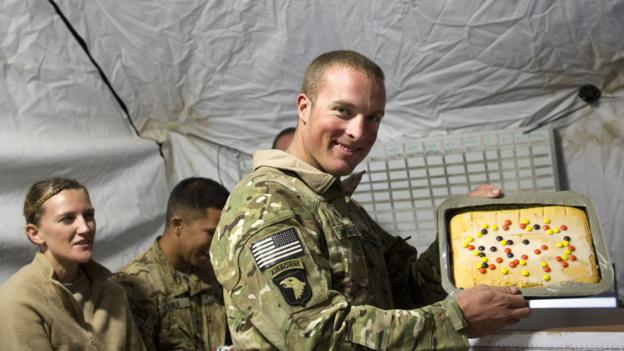
It’s a popular urban myth that Twinkies, the famous American cream-filled sponge cake, have a shelf-life of decades and can even survive a nuclear war. In fact, they stay fresh for only about a month, and their ability to withstand any environment more testing than a grocery store is doubtful.
Creating food designed to survive the rigours of war is the task scientists at the Combat Feeding Directorate of the US Army Natick Soldier Research, Development and Engineering Center in Massachusetts are set. They create military rations that, while may not necessarily survive a nuclear war, are a huge improvement over the Twinkie – and may even protect soldiers from infectious disease.
The most common ration US soldiers tuck into is the “Meal, Ready-to-Eat”, or MRE, which was introduced in the early 1980s. It is a packaged meal, which contains a main dish, like chilli or lasagne, various side dishes, and a chemical heater that warms the food through a reaction triggered by a small amount of water. The rations are required to have a best-before date at least three years into the future, if they were to be left out in 80F (26.7C) heat.
“We look at really novel food-processing methods, including some that aren’t even commercially available,” says Lauren Oleksyk, one of the food scientists at Natick’s Combat Feeding Directorate. “It’s the early end of R&D.”
The need for long-lasting rations captured the public’s imagination during the early days of the space race, when scientists looked for foods that could withstand the conditions of space travel. Some of their initial creations ended up better known for their novelty than for their taste, like the freeze-dried ice cream designed for the Apollo space missions (freeze-dried ice cream flew just once, according to NASA).
Combat taste
For the military, however, having the right rations is also a fundamental part of conducting warfare: food that can be taken into the field reduces reliance on supply lines that might be vulnerable to attack. This means developing ration packs that provide both sustenance and are light to carry.
At Natick Labs, the scientists are also looking for ways to incorporate nutritional supplements into rations. For example, they have been trying for years to find a way to include omega-3, an essential oil that has been linked to a variety of health benefits. The trouble is, the fatty acids in omega 3 oil oxidises really easily. “Twenty years ago it was impossible to get it to last three years at 80 degrees,” says Danielle Anderson, a food scientist at Natick. Since then, however, Anderson and her fellow scientists found a way to thinly coat particles of omega-3 oil such that they can be incorporated into food without reacting with any of the other ingredients.
This innovation has led to the idea of developing lemon poppy seed cakes that deliver 300 milligrams of omega-3, but don’t taste fishy or go rancid quickly. That’s about twice the amount of omega-3 you get from eating a typical 3-ounce (85g) can of tuna. “It tastes pretty good,” says Anderson. If this omega-3 cake is then placed in a sealed container along with a substance that soaks up oxygen, the cake stays fresh for the three-year ration-pack requirement. The idea is analogous to adding silica gel to shoe boxes to absorb moisture. When this lemon poppy seed cake treat will make it into a ration pack is unclear, however; it awaits field testing.
The Natick scientists are also investigating foods that will help enhance soldiers’ capabilities in their day-to-day jobs, either by protecting them from illness or enhancing their stamina – what they call “performance optimisation”.
Anderson says they have recently turned their attention to probiotics, the so-called “beneficial bacteria” that are now added to some popular foods like yogurt. From the Army’s standpoint, probiotics are of interest because they might protect soldiers from gastrointestinal viruses. But the challenge, as with other foods, is incorporating them into rations that can last for several years. “The technology hasn’t come around yet to allow probiotics, which are really live bacteria, to survive for our shelf-life requirement,” says Anderson.
Impossible meal
The food has to be tasty, of course: after all, if the food isn’t eaten, it doesn’t provide any benefits. Some military rations, like cheese tortellini, can withstand the rigorous heat treatment required to enable them last for years and remain palatable. A cheese-and-vegetable omelette, on the other hand, proved so unpopular that it was discontinued. So the scientists at Natick go through a constant cycle of testing new processing methods, like using high-pressure instead of high-heat. This year, they will be adding several items to the military menu, particularly new gluten-free and vegetarian options.
Of all the hurdles they face, getting bakery items to be edible (and taste good) after three years in 80F heat is still proving impossible for modern food science. They have been looking at processes such as osmotic dehydration (which they use to create meat rations that taste like deli cold cuts) to prolong the life of bakery items, but without success so far.
So creating pizzas and sandwiches is still a challenge, and creating the simplest sandwich is perhaps the most difficult challenge of all. “The impossible peanut butter and jelly sandwich is something we would like to have,” says Anderson.
Peanut butter and jelly sandwiches have a military history. They were on the ration menus in World War II, some people have suggested that GIs added jelly to their peanut butter to make it taste better. This American lunch favourite is one of Natick’s most frequently requested items, but it’s also one of food science’s ultimate technical challenges. Not only does it mean keeping the bread fresh, but combining ingredients with different water contents.
One problem the researchers have experienced is that peanut butter sucks moisture out of the bread, the same way it sticks the roof of your mouth, making it dry. Another is that the water from the jelly goes into the peanut butter. Not to put too fine a point on it, this makes as Anderson puts it, “an absolute mess”.



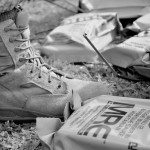
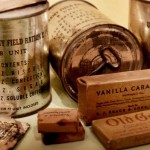

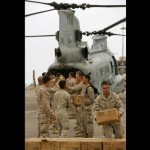
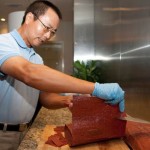
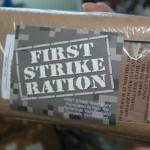
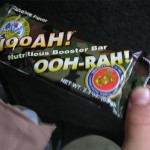
Leave a reply